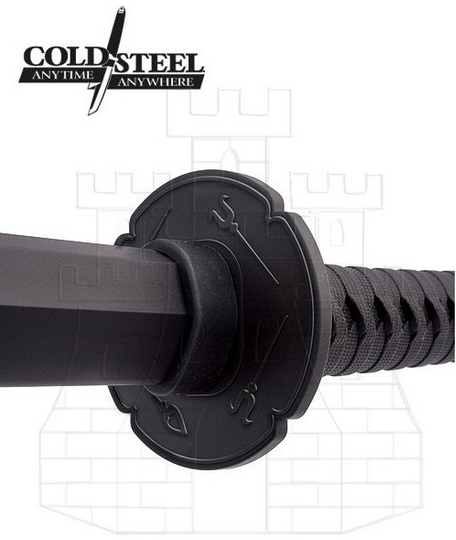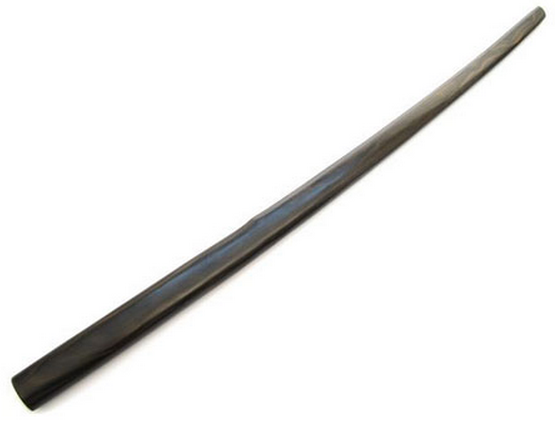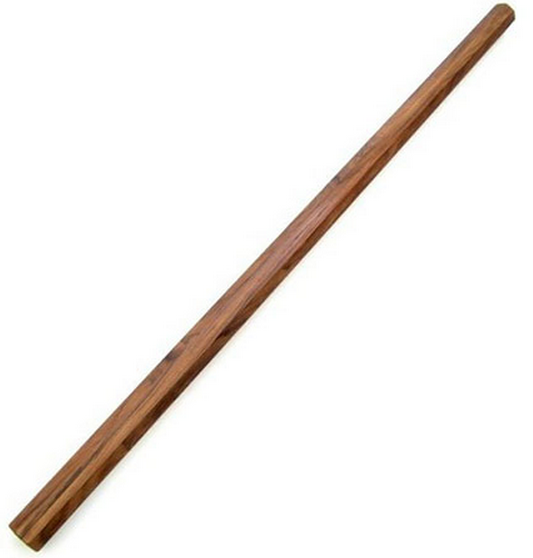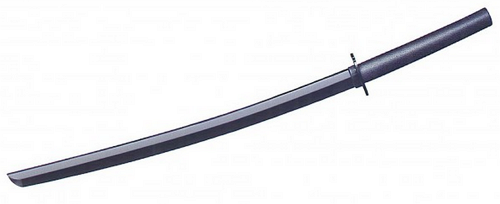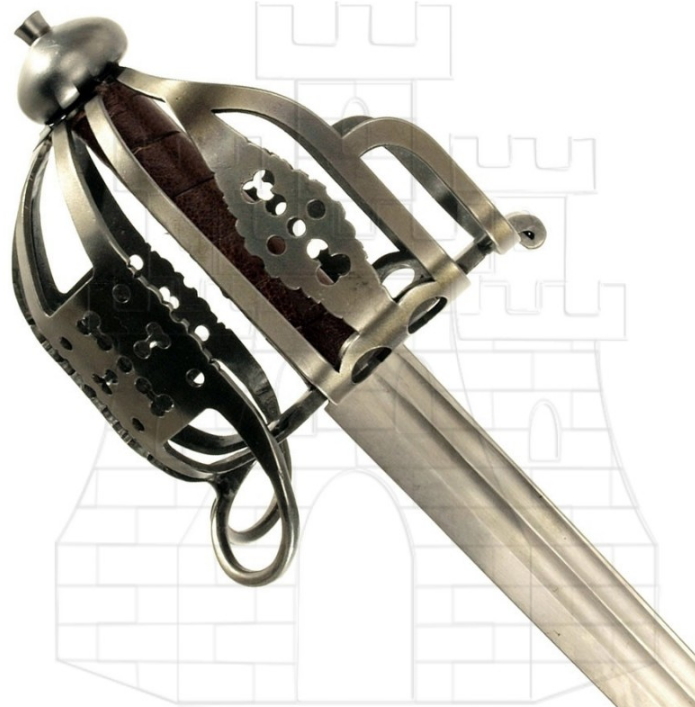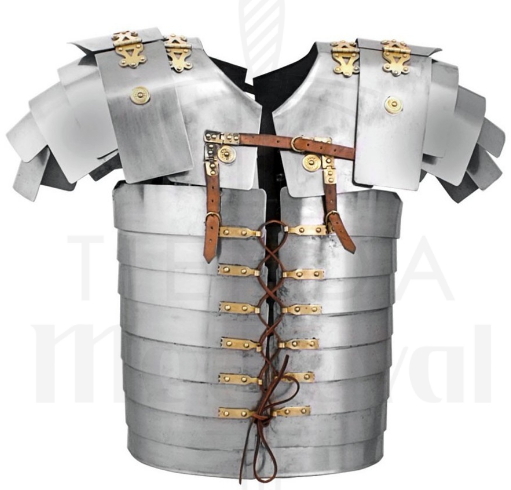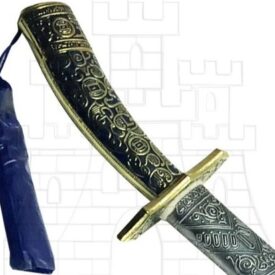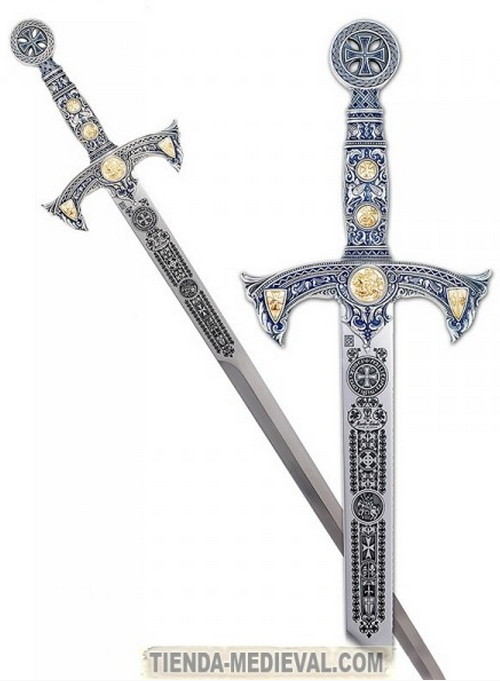The history of the Japanese sword is so ancient that its traces lead us to the “Era of the Gods”, which precedes the written history of Japan. The use of the bokken came much later, between 1336-1600, in a Japan that is recovering from injuries that left one hundred years of civil strife. During that century of conflict, the country’s security was guaranteed by the samurai (military elites under the command of the Shogun-highest authority), but when peace came and were no longer needed their services, they were forced to seek other means to earn a living, some became robbers, but most took the knowledge they had and put it in medicine or education; other chose to be bodyguards at the sevice of prestigious families from Japan, etc…
But the most valuable samurais of the Japanese culture today, are those who were encouraged to teach their knowledge to students and schools, to create the Ryu, unified today by The International Federation of Martial Arts based in Tokyo. Among the prominent samurai may be mentioned: – Sanada Yukimura: for their martial skills received titles like “The Crimson Demon of War”, “Hero who appears once every hundred years” or “Warrior number one in Japan”, – Oda Nobunaga: the first of the “Great Joiner”, betrayed by one of his generals and forced to commit seppuku, – Saigo Takamori: considered by many historians as “The Last Samurai”.
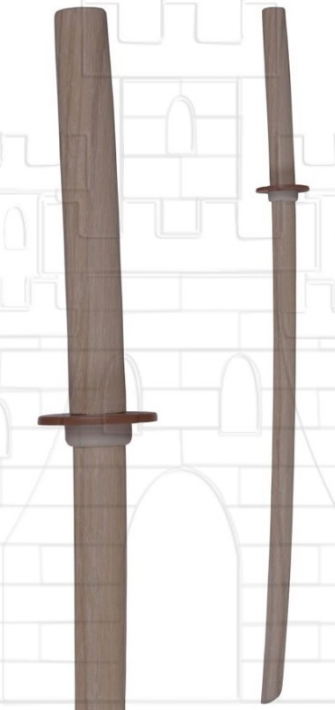
The bokken is a wooden sword (generally oak) in one piece, used in various martial arts such as:
- Kenjutsu – is a discipline that requires for its practice, involving the body, spirit and mind. Using the vernacular, Kenjutsu is also known as “sword techniques” – literal translation – or “Japanese fencing” and accepts various techniques, both solo – suburis – as against an opponent – kumitachi. To progress naturally in the Kenjutsu, there are three levels of difficulty and in each there are a number of exercises that allow the student to know how to act in all situations that may occur in combat and efficiently combat with Japanese sword.
- Kendo – is based on Kenjutsu and was originated by the samurai of feudal Japan. It is a form of training that is practiced with bokken and there are several schools that support different techniques. The samurai who founded these schools developed their own style and philosophy about Kendo, so now you can go with two swords at a school or a long sword (daito) and one short (shoto) in another. It is important to note that the goal of Kendo is not purely sports, what is sought is the union between body and mind and to act at once.
- Iaido – is one of the best known practices in martial arts and teaches to sheath and unsheath the katana. Based on the Japanese philosophy of calculating the consequences of every move and anticipate the opponent’s reaction, in the art of Iaido the confrontation begins with the sword still in the scabbard (saya). There are several steps to accomplish: – Nukitsuke: unsheath katana as quickly as possible, – Kiritsuke: cut the opponent, – Chiburi: clean the blade of blood, – Noto: replace the katana in its sheath. The iaidokas beginners start using a bokken, depending on each teacher, the intermediate level is practiced with a Iaito (mimicking the real katanas, in weight, shape, size and balance) and finally , the more experienced can choose a real sword (sharp) or Shinken.
The greatest advantage offered by bokken is its low price and safety when practicing any of the sports that we have seen above, on the other hand its simple construction and its maintenance requires less care than a katana. Even so, it can become a dangerous weapon and training with a bokken should be made with due care. Parts of the bokken. Since the Bokken is primarily used to replace or represent an actual katana, the component parts are important: tsuka (handle) kissaki (tip), mune (the edge opposite party), tsuba-moto (the third of the blade nearest the handle), tsuba (guard, not present in all bokkens).
Basic postures. Also known as kamae, the guard positions in martial arts are used for different situations. Depending on ryu (school), these may vary, however, five kamae are used throughout, sometimes with different names or specific details:
- Chudan kamae: stance associated with the element “water” because of its adaptability. The sword points to the opponent, to the sternum, throat or eyes, depending on the school, hold the bokken with both hands, the left and right print strength to lead the coup. The body relaxed, but not too much and the eyes looking at the opponent.
- Jodan kamae: stance associated with the element “fire” for its aggressiveness: the sword is held above the head, ready to apply a diagonal or vertical stroke. This position generally runs with the left foot forward to allow rotation of the torso and add speed to the sword.
- Gedan kamae: stance associated with the element “earth” for its stability: here, the sword is pointing down, into the opponent’s knee, from this position one can defend and counter enemy attacks.
- Hasso Kamae: lateral position associated with the element “wood” for its verticality: similar to jodan, hasso puts the left foot forward and the sword close to the face. Hasso reflects a less aggressive intent and was designed primarily to meet the enemy’s intentions.
- Waki: posture associated with the element “metal” left foot forward and placed the sword back, as to hide it, is commonly called the “hidden guard” in many ryu. Although apparently awkward posture, can actually carry out a series of attacks.
Taking care of the bokken. While more secure than the katana, should be considered a weapon. After use against another bokken make sure that there is no splinter. Currently the bokken comes with a coat of varnish but if not, a good idea would be to use tung oil on the entire surface a couple of times a year to prevent the wood from drying out. Given that the katana is the most important sword in Japanese society, often called the soul of the samurai, it should be treated with utmost respect. Before you start training must bow to the sword, to colleagues, when crossed swords, etc.. In Japanese culture these traditions endure both out of respect and safety, and indeed, unsheathing a sword without observing the protocol could be confused with the intention of attacking. On the other hand, the swords that are not their own, never handled without permission, but if it becomes necessary, should be treated with care and respect. In mid-1600, the Zen priest Takuan Soho explains in his “Record of Immovable Wisdom” that: “We have to distinguish between two forms of training, one spiritual and the other practical. The understanding of the technical principles alone can not lead to master the skill of the movements. The training must never stay in one hand, spirit and technique are like the wheels of a car. ”
